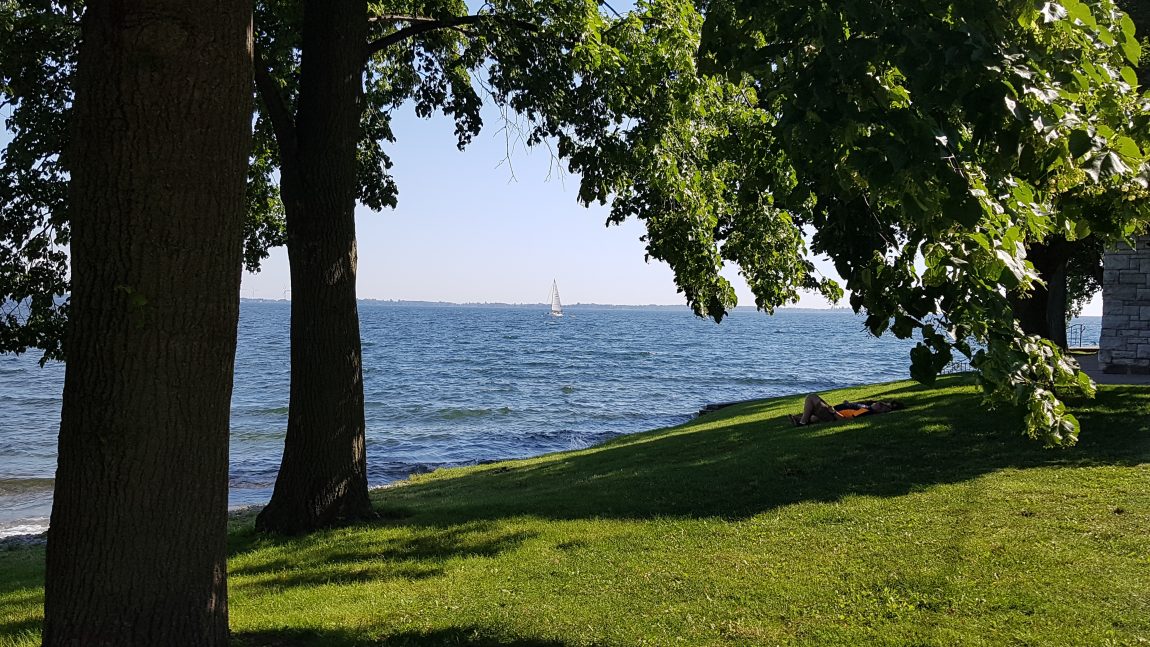2017 was a big year for green infrastructure in policy. We were pleased to see the inclusion of green infrastructure in a number of policies from several provincial ministries. Below, we summarize some of the major policies relating to green infrastructure that were released in 2017, and provide an update on policy we would like to see finalized.
MUNICIPAL ASSET MANAGEMENT (draft)
The Ministry of Infrastructure (MOI) has proposed a new regulation that would require municipalities to develop and adopt a strategic asset management policy. The draft regulation includes green infrastructure in its definition of Infrastructure Assets, and will require that municipalities consider options to reduce full lifecycle costs of assets, including the potential use of green infrastructure solutions.
VOLUNTARY CARBON OFFSET PROGRAM (draft)
The Ministry of Environment and Climate Change (MOECC) is developing a voluntary carbon offsets program (separate from the Cap and Trade program) with the aim to provide a quality, branded, class of offsets that the Ontario government, the private sector and others can use to reduce both their carbon and ecological footprints. In the discussion paper released through the EBR in November 2017, potential offsetting projects that would provide co-benefits were emphasized, including green infrastructure projects that would align with the UN Sustainable Development Goals.
MODERNIZING ONTARIO’S MUNICIPAL LEGISLATION ACT
The Ministry of Municipal Affairs (MMA) updated Ontario’s Municipal Act and the City of Toronto Act to give municipalities more responsibility and power to grow and protect green infrastructure, including: requiring that municipalities have policy pertaining to protection and enhancement of their tree canopy and natural vegetation; allowing municipalities to pass green roof by-laws; and empowering municipalities to act in the economic, social and environmental well-being of the municipality, including respecting climate change.
WETLAND CONSERVATION STRATEGY
The Ministry of Natural Resources and Forestry (MNRF) has released its Wetland Conservation Strategy, which outlines a framework to guide wetland conservation across the province into the year 2030. The strategy identifies the important role that wetlands play as green infrastructure in Ontario, and identifies the need for protection, restoration and creation of wetlands in Ontario.
CONSERVATION AUTHORITY ACT
The MNRF has modernized the Conservation Authority Act and now recognizes watershed management as a key tool in helping Ontario to adapt to the impacts of issues such as rapid growth and climate change.
GROWTH PLAN FOR THE GREATER GOLDEN HORSESHOE
The MMA released the Growth Plan for the Greater Golden Horseshoe, which includes support for green infrastructure, specifically in the context of stormwater management, climate change mitigation/adaptation, natural heritage protection and local agriculture.
MUNICIPAL OFFICIAL PLANS
The number of Official Plans in Ontario that mention green infrastructure has grown to 22 out of 93 (24%).
Key outstanding policy recommendations from GIO
Ministry of the Environment and Climate Change
LID Guidelines: Since 2016, the MOECC has been in the process of updating its stormwater guidelines to include low-impact development. GIO is very supportive of the work done by the MOECC to craft these guidelines and enthusiastically anticipates the release of these guidelines to encourage the use of green infrastructure to manage rain where it falls.
Ministry of Infrastructure
Asset Management:
In 2017, the MOI released a draft of its new Municipal Asset Management Planning Regulation. GIO was very pleased to see green infrastructure included in the draft and made the following suggestions for the final regulation:
1) Define “green infrastructure”: To ensure clarity around the definition of green infrastructure and alignment to policy statements under section 3(1) of the Planning Act, we recommend including a direct reference to or inclusion of the Provincial Policy Statement (2014) definition of green infrastructure.
2) Revise the definition of “infrastructure assets” to ensure green infrastructure assets are not required to be tangible capital assets.
Infrastructure Funding:
Despite the eligibility for living green infrastructure projects, there is still significant work needed to ensure that the government’s funding commitments support real changes in how we build infrastructure. We need to ensure the Province of Ontario prioritizes living green infrastructure projects through its bilateral agreement with the federal government. To support a resilient and sustainable Ontario, 15% of the infrastructure funding should be allocated to living green infrastructure projects.

